Nematodes (round worms) and mites are known parasites of spiders. These mites can easily be spotted on the spider as red dots.
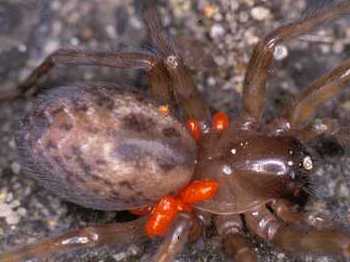
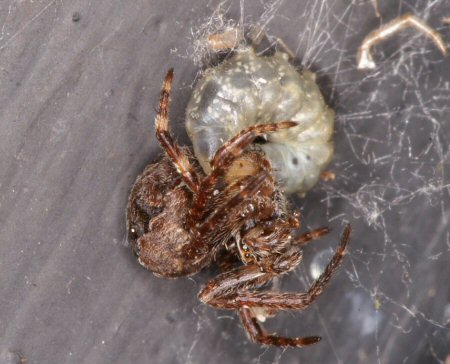
Also birds, lizards, geckos, scorpions and centipedes catch spiders from the ground or out of their web.
| Spider enemies |
|
Spider enemies
Spiders are soft bodied animals full ofproteins that can be eaten and
consequently have many enemies.
Nematodes (round worms) and mites are known parasites of spiders. These mites
can easily be spotted on the spider as red dots.


Also birds, lizards, geckos, scorpions and centipedes catch spiders from the
ground or out of their web.
There are wasps specialized in spider hunting, the spider
wasps (Pompilidae), use the captured spider to lay their eggs in. The larvae
hatched inside, feed on the paralyzed spider. |
|
| Photo Michael Barritt | Photo Seth van Ringelenstijn |
| There are also flies (Acroceridae) that
attack spiders and deposit the black coloured eggs, on vegetation or on the
ground. The newly hatched larvae are very mobile, they crawl or even jump on
a spider's leg. These larvae penetrate thought the legs the book lungs and
consequently kills the spider. The praying mantis, a great killer, eats any insect or spider it runs into, even another praying mantis that happens to be on its knees. |
|
|
|
|
| Wasp with spider. |
Mantis, Mantis religiosa |
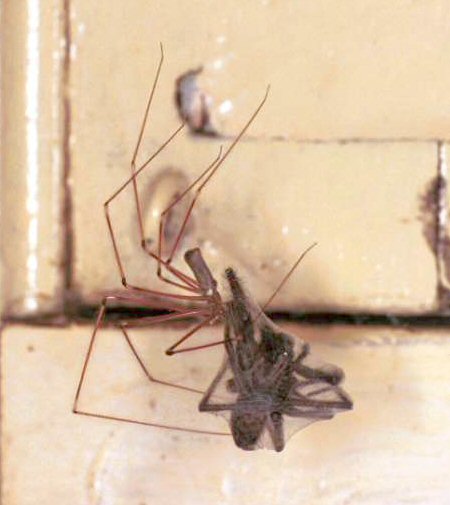 |
The greatest threat to spiders is other spiders. When times
are hard and food is scarce, it becomes hard for the spider to overlook it's
next of kin. A familiar spider in our house is the daddy-longleg, Pholcus phalangioides. She is a great spider killer. In the springtime, she is one of the last living spiders in our house. Every other insect or spider is consumed by her during the winter. In the end when famine strikes, they even kill each other. Also in the family Mimetidae and Ero are specialized spider killers. Ero attacks a spider by biting it in one of its legs. Then it retreats and waits at a safe distance until the bitten spider is paralyzed in a few seconds. Then it returns to suck it empty. We humans, have a bad habit of disturbing the natural world for our own selfish ends. In doing so we destroy many habitats in which the spiders live. Insecticides in agricultural activities wipe out the whole populations of insects and spiders. Many species of spiders are currently on a Red list and are in danger of becoming extinct. Tarantulas from South-America have become rare because many of them are caught and sold as pet animal. In many counties the law forbids killing, catching and selling of endangered species. |
| Daddy-longleg, Pholcus phalangioides with Tegenaria as prey | |
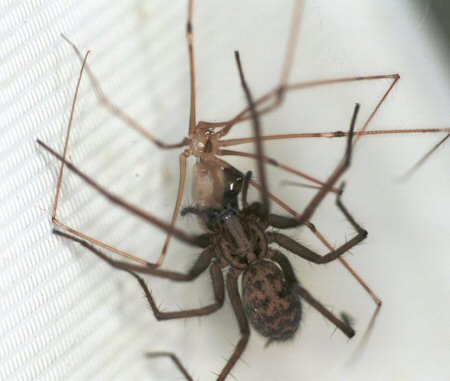 |
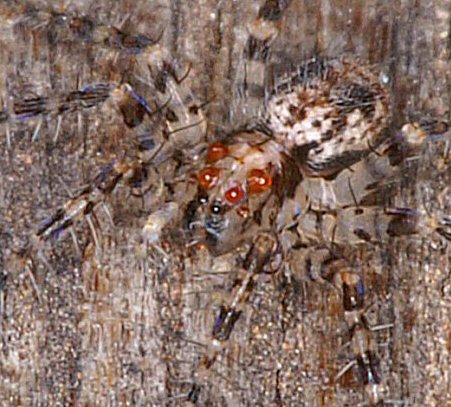 |
| Tegenaria atrica with Pholcus phalangioides as prey | Spider with mites on its head |
How to avoid enemies?
Spiders have developed several tactics to avoid becoming a prey themselves.
The most used tactic is to avoid being seen and this works very good because
nobody realises that in an average meadow in Britain gives habitat to 130
spiders per square meter.

Camouflage yourselves, like the above tmarus piger spider above, is a
good tactic.
 |
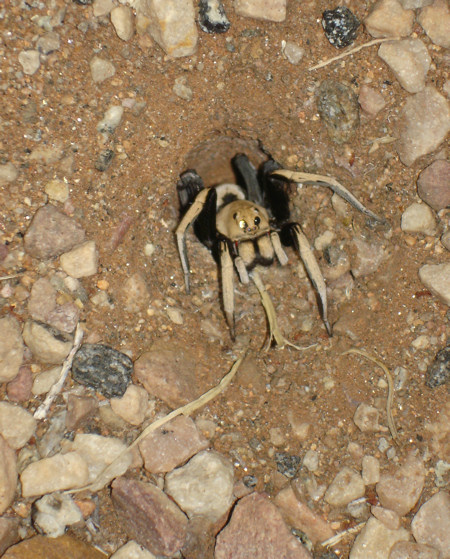 |
| Colour yourself in the same colour as you surrounding is very effective. | Digging a hole in de ground or hiding in a crevice has the advantage you will stay dry. |
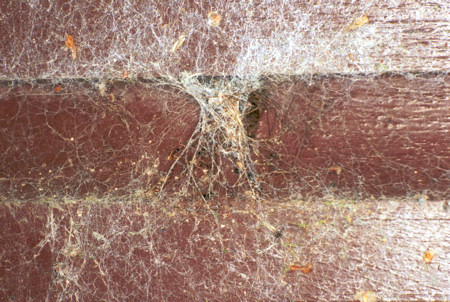 |
 |
| Live in a hole and wait until somebody stumbles over the treads is an ideal combination of hiding and hunting. | Playing stupid and colour yourself extravagantly is only wise if your are a fast spider with excellent eyesight and, like this jumping spider Saitis volans, have strong legs to jump away |
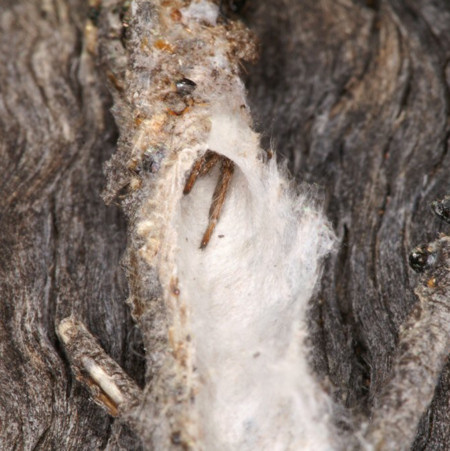 |
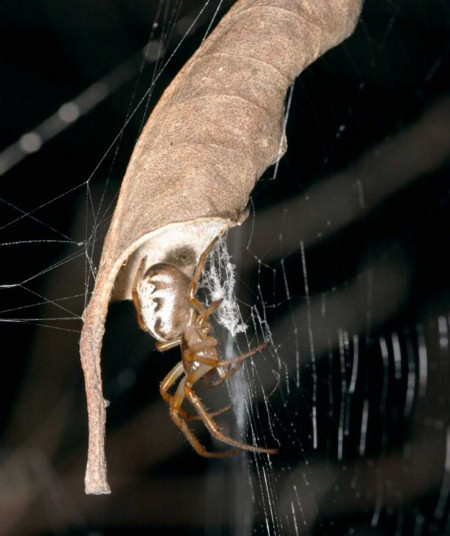 |
| Phryganoporus nigrinus hiding in soft silk under dirt | Hiding in a leave like this leaf-curling spider Phonognatha_graeffei Photo Jurgen Otto |
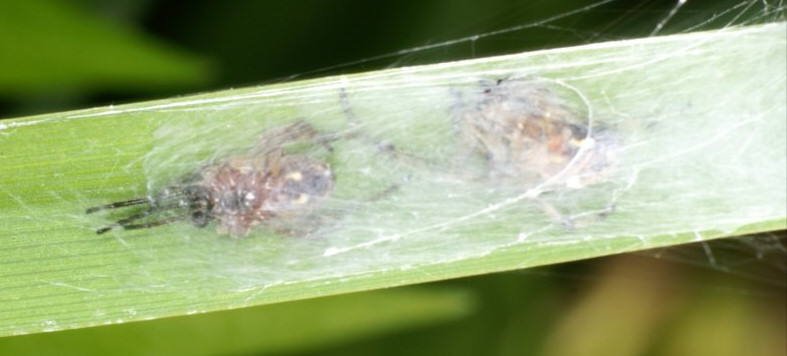 |
|
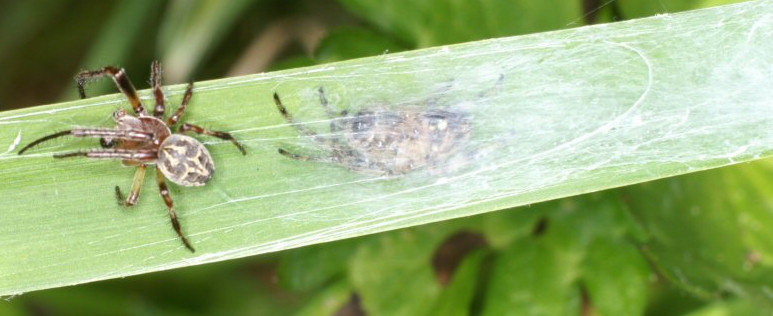 |
|
| and if you are hiding with your wife in a beatifull nest you are sent out to investigate the disturbance. Larinioides cornutus | |
Next: Literature
Ed Nieuwenhuys, 23 march 2023
December 2011,August 2011, January 2008, May 2007, 3
December 2006